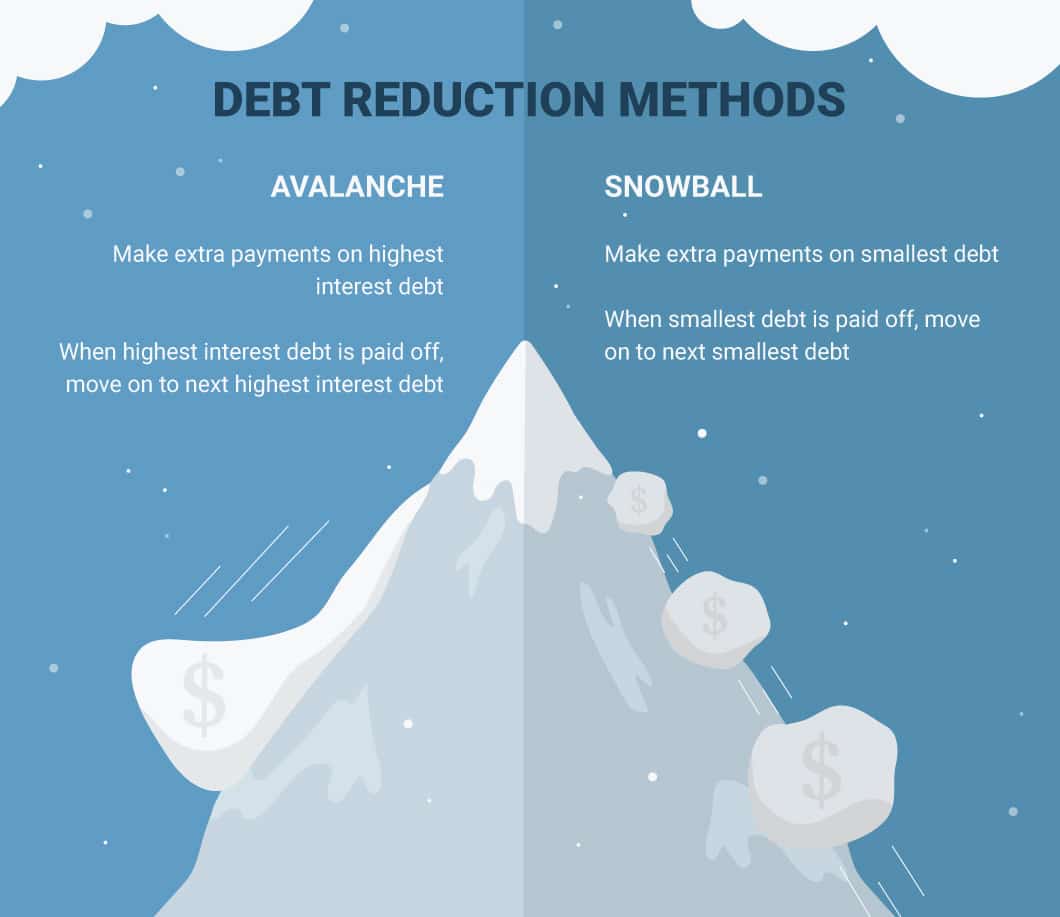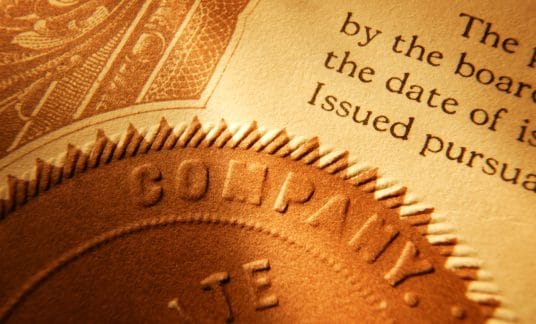Is your company starting to feel the strain of mounting business debt? If so, it’s probably time to tighten your belt and shed some of the burden.
Keep your company solvent by implementing these 7 business debt relief strategies.
What Is Business Debt?
Business debt is the opposite of consumer debt. It’s any debt you acquire for the company you own (e.g., corporation, limited liability company). For example, if you take out a loan to buy equipment for your business office space, that is considered business debt.
Bad Business Debt vs. Good Business Debt
While “debt” typically has a negative connotation, business debt isn’t always bad. Debt is often preferred to equity financing, which can be costly and lead to relinquished control of the business.
Examples of good business debt include government-backed debt programs, such as those offered by the Small Business Administration. Loans that help your business move forward are another example of good business debt. In contrast, bad business debt can include loans to clients or debt that you cannot pay back.
Related: Easily Calculate Business Loan ROI
7 Tips for Cutting Business Debt
When you’re looking for ways to reduce or eliminate debt your company’s acquired, here are some steps to take.
1. Rethink Your Budget
Sometimes bad business debt can accumulate quickly. When that happens, your first thought for how to get out of business debt should be to re-evaluate your budget. You may want to get business debt help from a financial adviser who can work with you to draft a budget that leaves plenty of wiggle room when it comes to covering your operating expenses.
Remember, budgets contain line items that are guaranteed recurring expenses (e.g., rent, utility bills). Beyond these, many other items are expendable and can be replaced or eliminated to save money. Consider how you can reduce your business’s overhead costs. Once this money’s freed up, you can reallocate it toward small business debt repayments.
2. Perform Triage on Your Business Debts
Not all business debt is created equally. Some interest rates are much higher than others, which can result in crippling debt if you let the interest accumulate. Additionally, you might not realize how much debt you actually have. So it’s important to take the time to get organized and catalog your liabilities.
Notate the following for each debt so you can make it easier to pay down what you owe fast:
- Creditor
- Type of debt
- Purpose of debt
- Due date
- Interest rate
- Terms
- Payment installment
- Outstanding balance
Either bit of business debt advice can work. It’s just a matter of finding one that works best for your business.
3. Prioritize Your Business Debt Payments
When it comes to dealing with bad business debt, many entrepreneurs put it off or refuse to even think about it. Running from the problem won’t fix it, though.
To get some business debt relief, you’ll need to be willing to prioritize your repayment. In other words, you need to act before your small business debt grows into something insurmountable.
Consider making more than just the minimum payment. Depending on your loan type, paying just the minimum due might get you stuck in a cycle in which you’re paying the interest every month without touching the principal.
Be sure to contact your lender and find out what steps you can take to reduce your business debt.
4. Consolidate Your Business Debt
Debt consolidation can go a long way if you want to find out how to get out of business debt. Merging your various debts and outstanding loans into one easy-to-track payment can help reduce stress and debt at the same time. This can be especially true if you consolidate multiple short-term loans into one single long-term business loan.
Here are some of the main advantages of a debt consolidation loan:
- There’s only 1 payment to keep track of
- You might be able to consolidate at a lower interest rate
- Fees are often lower than unconsolidated debt
- There’s a clear timeline as to when the debt will be paid off
5. Ramp Up Your Sales
Increasing your sales can be a lifesaver if you need business debt help. To help you attract new customers and bring in more sales, here are some of our favorite strategies:
- Increase your social media presence and marketing efforts
- Target untapped niche markets
- Sell the unique benefits of your products or services
- Sell more to existing clients (e.g., bundle deals)
- Promote your business locally to incentivize customers (e.g., gift giveaways, email coupons)
6. Find Other Ways to Increase Revenue
In addition to driving more sales, there are other ways to get additional revenue, which can help create a sustainable business debt management strategy. Besides taking on another client or a side hustle to earn more income, what else could you do?
Here are a few ways to increase your business revenue you might not have considered before:
- Raise prices
- Sell unused assets
- Get better at timely client invoicing
- Consider leasing out part of your office space
7. Talk to Suppliers
Unlike personal debt, business debt is often money you owe to those who supply the raw materials used to make or market your products. Needless to say, you can’t just skip town and run from your creditors. Instead, you need to build on and solidify the relationships you have with your business’s creditors. As such, negotiating with suppliers is another corporate debt management strategy to try.
If you’re on good terms with your suppliers, ask them if they’d be willing to extend a little leniency your way. Additionally, consider asking your suppliers if they will allow you to return unsold products for a refund.
If you’ve been a reliable and respectful customer, they may be willing to work with you or offer you a debt repayment plan on more favorable terms. Your creditors want your company to succeed too. After all, they won’t benefit from watching your business fail.
Best Options for a Debt Payoff Strategy
There are a couple of common strategies business owners use to pay off debt: the percentage and spartan methods. When you’re deciding which debt reduction plan to choose, be sure to keep your cash flow and timeline in mind.
Percentage Strategy
With this strategy, you dedicate a certain percentage of your business’s profit to pay off debt. To make this strategy most useful, you’ll need to have a budget in place as well as a firm grasp on your business finances.
Spartan Strategy
For this small business debt management strategy, business owners cut costs and focus on debt repayment by taking an extremely basic, no-frills approach to business expenses. You’ll need to itemize things you won’t spend money on and only spend money on essentials until the debt is paid off.
-
Avalanche or Snowball Approach?
Whether you choose the percentage or spartan strategy, these are a couple tried-and-true best ways to pay off debt fast:
You may decide to chip away at the most expensive, highest-interest-rate financing first and work your way to the least expensive, known as the debt avalanche method.
Alternately, you might use the debt snowball method, in which you pay off the smallest debt burden first, move on to the next smallest debt and so on until you’ve paid off all your business debt.
Either bit of debt reduction advice can work. It’s just a matter of finding which option works best for your business.
Analyze Your Business Debt with the Debt-to-Equity Ratio
One of the best steps you can take when drafting a debt-reduction strategy is to determine your debt-to-equity ratio.
Follow this simple formula to find your debt-to-equity ratio:
Total Debt / Total Equity = Debt-to-Equity Ratio
This ratio says a lot about your business’s financial health. It lets you know how much you owe lenders in relation to how much equity you own in the business.
We’re often asked: How much debt should a company have? To be on the safe side, you always should strive to have a debt-to-equity ratio under 1. If your ratio is above this figure, then you owe more money than you have coming in. The lower you can keep your debt-to-equity ratio, the better.
Shedding Your Small Business Debt for Good
Dealing with business debt is never a fun experience. It can, however, be the most important thing you do for the long-term financial health of your business.
If you find that you’re in over your head and need business debt solutions, don’t hesitate to search for small business consulting services that can provide assistance, such as financial advisers or business debt management professionals. Usually, they have the experience and means to weed out inefficiencies in your business’s debt reduction strategy and can even negotiate better repayment terms with your lenders.
Your ultimate goal in finding business debt relief should be to implement a debt reduction strategy that cuts to the heart of the problem — overborrowing and underpaying.












